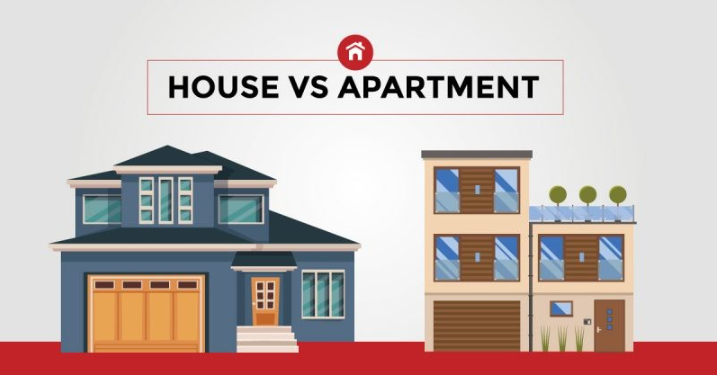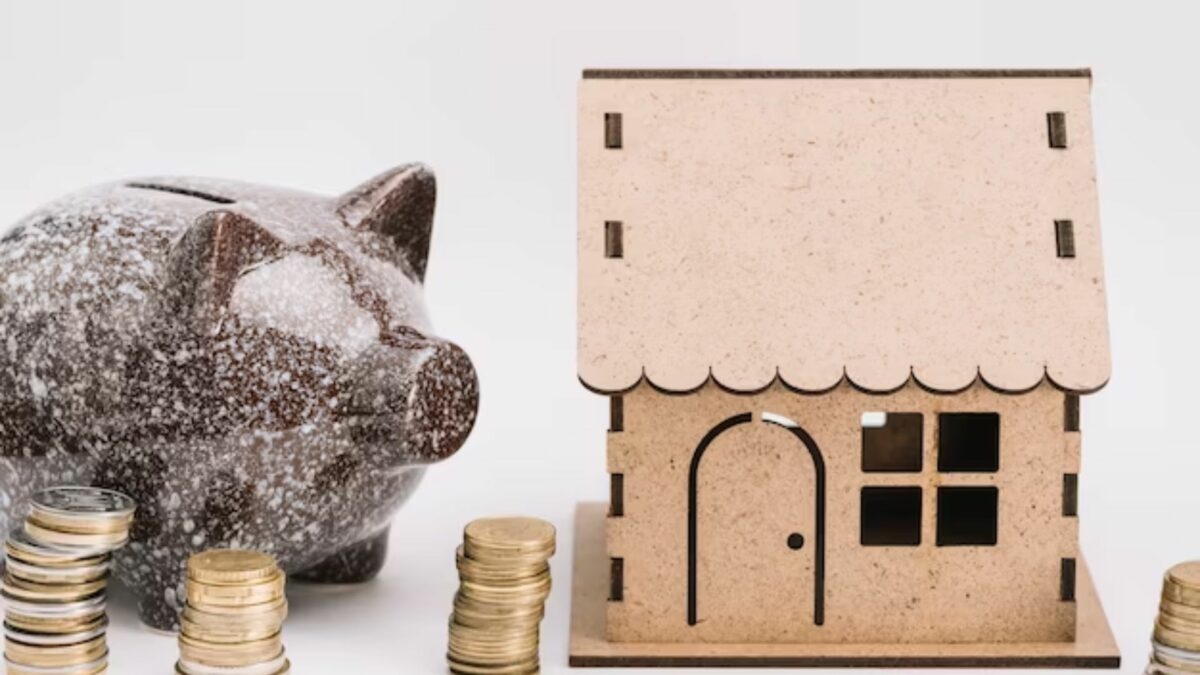“If you wait until you have enough money to decorate and make your home your own, it will never happen. If you wait until you can afford to buy everything new, you are missing the point. It is the old, the new, the hand-me-down, the collected, the worn but loved things in your home that make it your own.”
–Stacy Risenmay
I figured that we had found the perfect investment property. It was a huge home in a historic district, and it was cheap. It had some blemishes, but nothing which a little touch-up couldn’t fix. We were going to renovate the house and then make it available for Section 8 vouchers. If we kept our costs in check, then we could actually rent it for the full voucher price, which would mean that the renter didn’t have to spend money out of pocket, and we’d get a deposit twice a month, like clockwork.
Couldn’t go wrong, could it?
I and a couple of friends from business school went in together and bought the property, and even got it for less than what we thought we’d have to pay for it. So far, so good.
Then, we started making mistakes.
The first mistake we made was hiring a contractor who was absolutely convinced that he had to make every project a work of art. He had these grandiose ideas of making arches in the hallways, fancy staircases, and the whole nine yards. He wanted to turn our house in a “neighborhood in bloom” (to put it mildly…I saw at least two drug deals on our street, which was only 6 houses long) into a castle. We consistently told him “just make it livable, nothing fancy.”
Since we all lived over an hour away and were either working full time or were full time students, we didn’t have much chance to go over and check up on the contractor’s work. It was slow and tedious, and soon over budget. We didn’t want to change horses mid-stream and leave the job unfinished, so we growled and snarled but eventually opened up the checkbook.
By the time he was done, he’d turned it into a really nice home but had priced us out of Section 8 rental range.
It took several long months before we could sell the property, and we lost money. Not quite our shirts, as I think I still have one or two torn threads left.
Some of the blame falls on us for not enforcing our vision and desires, and some of the blame rests with the contractor who disregarded our wishes and got emotional about his work.
After buying and selling over a dozen houses, some of which we lived in, and some of which were investments, I think I’ve finally pushed myself beyond the mental intermingling of two concepts for the same object.
There’s a Difference Between the House You Live in and the House You Invest in

At first, that might seem like a pretty trite statement.
“Tell me more, Captain Obvious,” you may be thinking to yourself.
Yet, especially if you are buying your first or second investment property, while you objectively know that there are differences, it’s really hard to separate them out in your mind when you’re actually engaged in the process of deal-making.
All our lives, we hear about how a house is a home, it’s our biggest investment, and we should make our homes warm, colorful, soothing, fuzzy, and all sorts of emotive words. We connote shelter with emotions about family and comfort. It’s in the real estate industry’s best interests that we become as emotionally attached as possible to the roof over our heads so that we can let Monkey Brain latch us into our houses with the endowment effect.
Having a house you enjoy living in is all fine and good as long as you don’t overcommit yourself in the process. The problem occurs when you start to transfer some of those feelings which make you enjoy your home into your investment properties.
I’ve invested in several investment properties over the years, and I still have to fight the urge to have emotional reactions when I walk through a potential investment property. There’s almost always a reason why the purchases are bargains, and it almost always comes down to one underlying source.
The visual appeal of the property is terrible.

I walk in, and see 70s wood paneling that needs a disco ball to complete the image, crappy carpet, outdated appliances, puke green paint on the walls, and on and on and on. Monkey Brain starts throwing bananas all over the place because this is a property he would never want to live in.
You have to step beyond the emotions and remember that an investment property is absolutely, purely, 100% a business transaction. It’s all about numbers. If the numbers work, then it’s a good deal. If the numbers don’t work, then it’s not a good deal.
This isn’t to say that I want my renters to live in filth and squalor. Just the opposite is true. I want them to live in clean, well-apportioned, comfortable properties.
I want to use the endowment effect to my benefit. I want the renters to feel attached to the place so that they take care of it as if it was their own home. That way, I’m not stuck using up their deposit (and more) cleaning up the mess afterward.
But, I can do that within a budget. I can provide functioning appliances but not have to go all out and buy Bosch or Viking. I can provide good carpet without installing the magic carpet. You get the point.
It takes a slight suspension of disbelief to see a place which needs significant work and envision where you want it to be.
The same holds true for trying to turn a palace into an investment property. I’ve seen several houses which were very nice – they were placed I’d love to live in, and Monkey Brain immediately starts extrapolating that if we (Monkey Brain and I) like it, then everyone else will like it.
Me: “This is a pretty expensive house. It’s slightly overpriced.”
Monkey Brain: “SELL TO NEXT BIGGER FOOL.”
Me: “What if it doesn’t sell?”
Monkey Brain: “WE MOVE IN! LIVE IN LUXURY! HAVE 8 BEDROOMS FOR STORING BANANAS. WHY DO I HAVE TO HAVE STUPID HUMAN IN MY HEAD?”
It’s very easy to become mentally attached to places like this because you imagine yourself living there. It’s only a very, very short step from there to falling for the endowment effect and thinking of the property as yours, meaning that you’re more than happy to get into a bidding war with the 37 other families who also want that house. It’s kind of like letting pride pop up during an auction and thinking “I’m not going to let that guy outbid me! No, siree!”
When the emotional attachment happens with an investment property, you may as well flush your money down the toilet, because you’re going to overpay and you’re going to come up with all sorts of justifications for why you should be buying that property.
It’s difficult to remove emotions from your investing process, whether it’s stocks (“Enron? Hey! I’ve heard of that! Buy!!!!”) or investment properties.
Here are some of the things I think about when looking at investment properties to remind myself that it’s not my house:
- I’m never going to live there. Instead, I ask my Realtor/property manager a few questions:
- What’s the least amount the seller will take?
- How much will it cost to repair (although I can usually ballpark this number myself)?
- How much will it rent for?
- How soon can you get a tenant in here once it’s made ready?
- It’s all about numbers. I try not to even look at a picture of the property before running the numbers to see what the potential ROI is on the investment. The moment I start looking at pictures, I’m potentially exposing myself to becoming emotionally attached. Instead, I want to make sure that the numbers work first.
- I only do a walkthrough to validate my assumptions. It’s not until I’ve already built my investing model and figured out how much I’m willing to pay in totality (price + closing costs + repair costs) that I walk through the property. Again, this prevents me from having emotional reactions and keeps me focused on the numbers.
I’m not a flipper. I’ve tried that and failed at it. There are plenty of people who do well in flipping, but it’s not where my skill sets lie. I buy and hold for rental income. Because I do that, I do not count on appreciation in my modeling to determine value. While I hopefully am buying very cheap and can create incremental value out of the purchase, I’m not depending on being able to sell the property for a higher price than I bought it for in order to justify the investment.
Whether you’re buying your first investment property or your fiftieth investment property, you’ll still be well-served to remember that it’s possible to start thinking about the investment property like you would your own home, which will be dangerous for your bottom line.
Have you ever fallen in love with an investment property? Tell us about your experiences in the comments below!
Author Profile
- John Davis is a nationally recognized expert on credit reporting, credit scoring, and identity theft. He has written four books about his expertise in the field and has been featured extensively in numerous media outlets such as The Wall Street Journal, The Washington Post, CNN, CBS News, CNBC, Fox Business, and many more. With over 20 years of experience helping consumers understand their credit and identity protection rights, John is passionate about empowering people to take control of their finances. He works with financial institutions to develop consumer-friendly policies that promote financial literacy and responsible borrowing habits.
Latest entries
 Low Income GrantsSeptember 25, 2023How to Get a Free Government Phone: A Step-by-Step Guide
Low Income GrantsSeptember 25, 2023How to Get a Free Government Phone: A Step-by-Step Guide Low Income GrantsSeptember 25, 2023Dental Charities That Help With Dental Costs
Low Income GrantsSeptember 25, 2023Dental Charities That Help With Dental Costs Low Income GrantsSeptember 25, 2023Low-Cost Hearing Aids for Seniors: A Comprehensive Guide
Low Income GrantsSeptember 25, 2023Low-Cost Hearing Aids for Seniors: A Comprehensive Guide Low Income GrantsSeptember 25, 2023Second Chance Apartments that Accept Evictions: A Comprehensive Guide
Low Income GrantsSeptember 25, 2023Second Chance Apartments that Accept Evictions: A Comprehensive Guide

